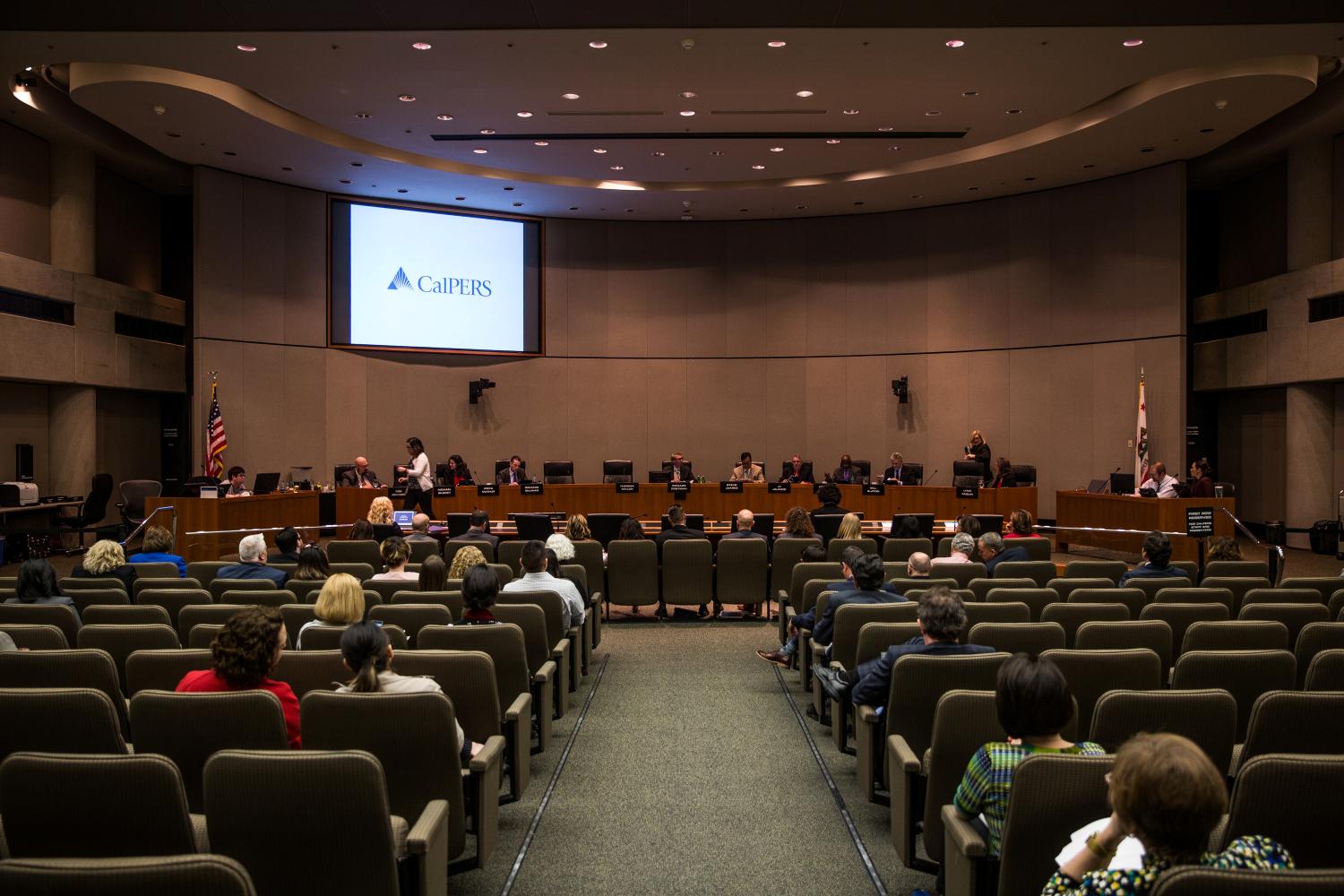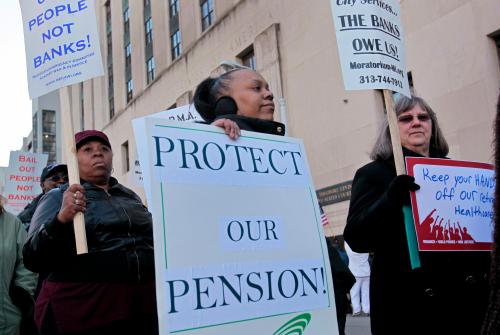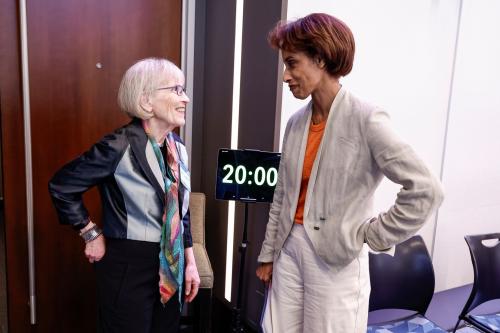A version of this paper was presented as part of the 6th annual Municipal Finance Conference, held July 17-18, 2017 at Brookings.
Despite the policy and press attention given to public unions and pensions, and their importance for state and local government finances and workers, research on the effects of collective bargaining rights on public employee pensions is surprisingly incomplete. This paper attempts to fill this gap. Using public employee retirement system financial data from the universe of state and local governments we exploit variation in the timing of state laws regarding public sector collective bargaining in a differences-in-differences framework, and find that collective bargaining requirements significantly and substantially increase government contributions to pensions, while reducing employee contributions. The increase in employer contributions is estimated to be about three times the size of the decrease in employee contributions; thus collective bargaining requirements significantly increase the overall generosity (and amount) of pension contributions and benefits. Collective bargaining requirements appear to have little effect on total public employment or payroll.
The case of Iowa illustrates the paper’s empirical strategy and previews the results. The Iowa Public Employment Relations Act created a duty to bargain with public employee unions beginning in 1976, prior to which all matters of compensation for public employees were determined legislatively (Heuton, 2014). Shortly after the duty to bargain was imposed, the first public employee unions in Iowa formed in August of 1976, consistent with findings by Valletta and Freeman (1988), Zax and Ichniowski (1990), and Frandsen (2016) that collective bargaining rights significantly spur union membership. While likely many aspects of compensation and working conditions for public employees were affected by the introduction of collective bargaining rights, one stark example of a response visible in Iowa government financial data is the fraction of public employee pension contributions made by employees.
This paper builds on a long literature examining the effects of unionism and collective bargaining in the public sector. Much of this literature has focused on union presence, wages, and employment, and found that collective bargaining rights lead to substantial increases in union presence and modest increases in wages (Freeman and Valletta, 1988; Zax and Ichniowski, 1990; Frandsen, 2016). This literature may miss much of the effect on compensation as a whole if there is a tradeoff between wages and retirement benefits in the union negotiation process, as suggested by Ehrenberg (1980).
Direct evidence on the effect of collective bargaining on public employee retirement benefits is much scarcer. Early evidence comparing unionized and nonunionized public employees found that unionized public employees’ fringe (including pension) benefits tend to be more generous (Gustman and Segal, 1977; Ichniowski, 1980; Kearney and Morgan, 1980) and less likely to be fully funded (Mitchell and Smith, 1994). Freeman (1986) and studies cited there document that public employee unions are associated with a substantially larger increase in pensions and other fringes than straight wages and salary, suggesting that unions may be more likely to shift compensation from wages to fringe benefits, as Farber (1978) found for unionized mine workers. Lewin et al. (2012) document that public employees have relatively more generous pensions and are more likely to have defined benefit plans—which shift investment risk from the worker to the employer—than private sector workers. Within the private sector, Freeman (1985) shows that unionized workers are much more likely to have pensions.
This paper contributes to the prior literature as the first to identify the effect of collective bargaining rights on pension generosity and amount among public sector workers.
Read the full paper here.
The authors did not receive financial support from any firm or person for this article or from any firm or person with a financial or political interest in this article. They are currently not an officer, director, or board member of any organization with an interest in this article.
The Brookings Institution is committed to quality, independence, and impact.
We are supported by a diverse array of funders. In line with our values and policies, each Brookings publication represents the sole views of its author(s).






